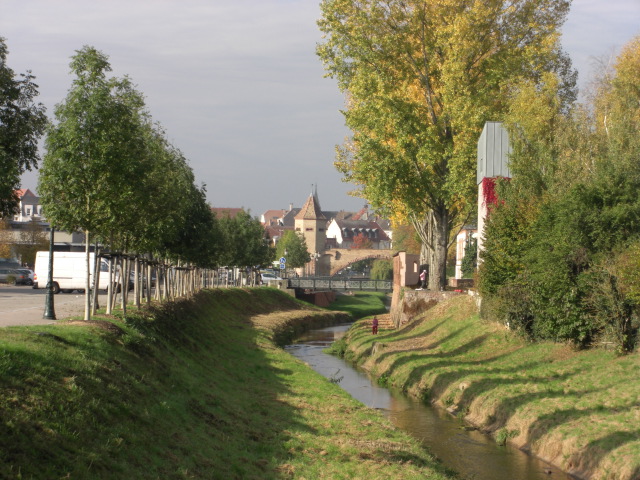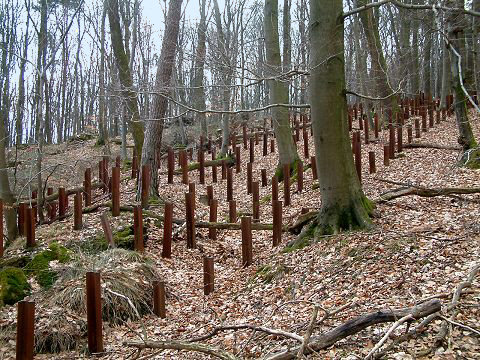|
Auenheim
Auenheim (; gsw-FR, Auenem) is a former commune in the Bas-Rhin department in the Grand Est region of north-eastern France. On 1 January 2019, it was merged into the new commune Rountzenheim-Auenheim. The inhabitants of the commune are known as ''Auenheimois'' or ''Auenheimoises''. Geography Auenheim is located some 15 km east of Haguenau and 13 km north-east of Bischwiller. Access to the commune is by the road D468 from Rœschwoog in the north-east which passes through the north of the commune and the village before continuing to Stattmatten in the south. The D463 branches off the D468 in the north of the commune and goes west to Rountzenheim. The TER Strasbourg-Lauterbourg railway passes through the village and there is a station in the commune which, however, appears to be disused. There is a belt of forest through the centre of the commune (the Biergrund) and a large forest in the south-east of the commune (the Unterwald) with substantial urbanisation in the nor ... [...More Info...] [...Related Items...] OR: [Wikipedia] [Google] [Baidu] |
Rountzenheim-Auenheim
Rountzenheim-Auenheim () is a commune in the Bas-Rhin department in Grand Est in north-eastern France. It was established on 1 January 2019 by merger of the former communes of Rountzenheim (the seat) and Auenheim. 4 September 2018 See also *Communes of the Bas-Rhin department
The following is a list of the 514 communes of the Bas-Rhin department of France.
The communes cooperate in the following intercommunalities (as of 2020):
[...More Info...] [...Related Items...] OR: [Wikipedia] [Google] [Baidu] |
Rountzenheim
Rountzenheim (; german: Runzenheim; gsw-FR, Runzenem) is a former commune in the Bas-Rhin department in Grand Est in north-eastern France. On 1 January 2019, it was merged into the new commune Rountzenheim-Auenheim. 4 September 2018 See also *Communes of the Bas-Rhin department
The following is a list of the 514 communes of the Bas-Rhin department of France.
The communes cooperate in the following intercommunalities (as of 2020):
[...More Info...] [...Related Items...] OR: [Wikipedia] [Google] [Baidu] |
Moder (river)
The Moder (french: la Moder, ; german: die Moder) is a river in northeastern France; it begins in Zittersheim and ends at the river Rhine. It is long. Etymology The name of the river comes from Matrae—the Gallic river goddess. Course Its source of the Moder is near the hamlet ''Moderfeld'', in the commune of Zittersheim. It joins the Rhine near the Iffezheim Lock, in Germany. The four primary tributaries of the Moder are the Zinsel du Nord, Zorn Zorn is a family name of German origin meaning "wrath". Historically, it was predominantly strong in German influenced cities such as Strasbourg, Kempten, Innsbruck, and Würzburg. Today, the surname Zorn can be frequently found in Bavaria, Baden- ..., Rothbach, and Soultzbach. The river passes through the following communes: References Rivers of France Rivers of Grand Est Rivers of Bas-Rhin Tributaries of the Moder {{France-river-stub ... [...More Info...] [...Related Items...] OR: [Wikipedia] [Google] [Baidu] |
Franks
The Franks ( la, Franci or ) were a group of Germanic peoples whose name was first mentioned in 3rd-century Roman sources, and associated with tribes between the Lower Rhine and the Ems River, on the edge of the Roman Empire.H. Schutz: Tools, Weapons and Ornaments: Germanic Material Culture in Pre-Carolingian Central Europe, 400-750. BRILL, 2001, p.42. Later the term was associated with Romanization (cultural), Romanized Germanic dynasties within the collapsing Western Roman Empire, who eventually commanded the whole region between the rivers Loire and Rhine. They imposed power over many other post-Roman kingdoms and Germanic peoples. Beginning with Charlemagne in 800, Frankish rulers were given recognition by the Catholic Church as successors to the old rulers of the Western Roman Empire. Although the Frankish name does not appear until the 3rd century, at least some of the original Frankish tribes had long been known to the Romans under their own names, both as allies providi ... [...More Info...] [...Related Items...] OR: [Wikipedia] [Google] [Baidu] |
Alemanni
The Alemanni or Alamanni, were a confederation of Germanic tribes * * * on the Upper Rhine River. First mentioned by Cassius Dio in the context of the campaign of Caracalla of 213, the Alemanni captured the in 260, and later expanded into present-day Alsace, and northern Switzerland, leading to the establishment of the Old High German language in those regions, by the eighth century named ''Alamannia''. In 496, the Alemanni were conquered by Frankish leader Clovis and incorporated into his dominions. Mentioned as still pagan allies of the Christian Franks, the Alemanni were gradually Christianized during the seventh century. The is a record of their customary law during this period. Until the eighth century, Frankish suzerainty over Alemannia was mostly nominal. After an uprising by Theudebald, Duke of Alamannia, though, Carloman executed the Alamannic nobility and installed Frankish dukes. During the later and weaker years of the Carolingian Empire, the Alemannic ... [...More Info...] [...Related Items...] OR: [Wikipedia] [Google] [Baidu] |
Maginot Line
The Maginot Line (french: Ligne Maginot, ), named after the French Minister of War André Maginot, is a line of concrete fortifications, obstacles and weapon installations built by France in the 1930s to deter invasion by Germany and force them to move around the fortifications. The Maginot Line was impervious to most forms of attack. In consequence, the Germans invaded through the Low Countries in 1940, passing it to the north. The line, which was supposed to be fully extended further towards the west to avoid such an occurrence, was finally scaled back in response to demands from Belgium. Indeed, Belgium feared it would be sacrificed in the event of another German invasion. The line has since become a metaphor for expensive efforts that offer a false sense of security. Constructed on the French side of its borders with Italy, Switzerland, Germany, Luxembourg and Belgium, the line did not extend to the English Channel. French strategy therefore envisioned a move into Belgium ... [...More Info...] [...Related Items...] OR: [Wikipedia] [Google] [Baidu] |
Institut National De La Statistique Et Des études économiques
The National Institute of Statistics and Economic Studies (french: link=no, Institut national de la statistique et des études économiques), abbreviated INSEE or Insee ( , ), is the national statistics bureau of France. It collects and publishes information about the French economy and people and carries out the periodic national census. Headquartered in Montrouge, a commune in the southern Parisian suburbs, it is the French branch of Eurostat. The INSEE was created in 1946 as a successor to the Vichy regime's National Statistics Service (SNS). It works in close cooperation with the Institut national d'études démographiques (INED). Purpose The INSEE is responsible for the production and analysis of official statistics in France. Its best known responsibilities include: * Organising and publishing the national census. * Producing various indices – which are widely recognised as being of excellent quality – including an inflation index used for determining the rate ... [...More Info...] [...Related Items...] OR: [Wikipedia] [Google] [Baidu] |
Sessenheim
Sessenheim (; gsw-FR, Sähsem) is a commune in the Bas-Rhin department in Grand Est in northeastern France. Culture Sessemheim was the setting for Johann Wolfgang Goethe's first love affair with Friederike Brion, a priest's daughter, which he immortalized in his '' Sesenheimer Lieder''. This collection of poems was the foundation of his reputation as a poet. See also * Communes of the Bas-Rhin department The following is a list of the 514 communes of the Bas-Rhin department of France. The communes cooperate in the following intercommunalities (as of 2020):Communes of Bas-Rhin {{BasRhin-geo-stub ... [...More Info...] [...Related Items...] OR: [Wikipedia] [Google] [Baidu] |
Blockhouse
A blockhouse is a small fortification, usually consisting of one or more rooms with loopholes, allowing its defenders to fire in various directions. It is usually an isolated fort in the form of a single building, serving as a defensive strong point against any enemy that does not possess siege equipment or, in modern times, artillery, air force and cruise missiles. A fortification intended to resist these weapons is more likely to qualify as a fortress or a redoubt, or in modern times, be an underground bunker. However, a blockhouse may also refer to a room within a larger fortification, usually a battery or redoubt. Etymology The term ''blockhouse'' is of uncertain origin, perhaps related to Middle Dutch ''blokhus'' and 18th-century French '' blocus'' (blockade). In ancient Greece Blockhouses existed in ancient Greece, for example the one near Mycenae. Early blockhouses in England Early blockhouses were designed solely to protect a particular area by the use ... [...More Info...] [...Related Items...] OR: [Wikipedia] [Google] [Baidu] |



